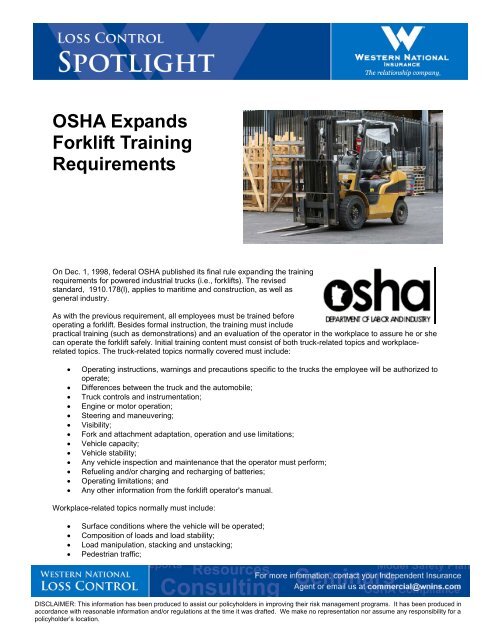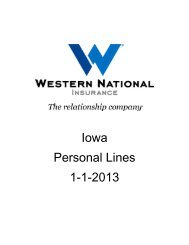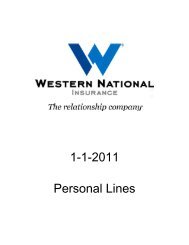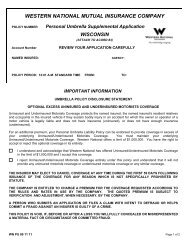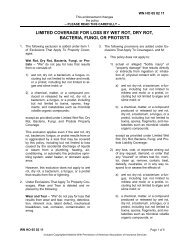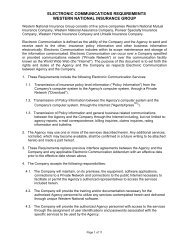OSHA Expands Forklift Training Requirements
OSHA Expands Forklift Training Requirements
OSHA Expands Forklift Training Requirements
You also want an ePaper? Increase the reach of your titles
YUMPU automatically turns print PDFs into web optimized ePapers that Google loves.
<strong>OSHA</strong> <strong>Expands</strong><br />
<strong>Forklift</strong> <strong>Training</strong><br />
<strong>Requirements</strong><br />
On Dec. 1, 1998, federal <strong>OSHA</strong> published its final rule expanding the training<br />
requirements for powered industrial trucks (i.e., forklifts). The revised<br />
standard, 1910.178(l), applies to maritime and construction, as well as<br />
general industry.<br />
As with the previous requirement, all employees must be trained before<br />
operating a forklift. Besides formal instruction, the training must include<br />
practical training (such as demonstrations) and an evaluation of the operator in the workplace to assure he or she<br />
can operate the forklift safely. Initial training content must consist of both truck-related topics and workplacerelated<br />
topics. The truck-related topics normally covered must include:<br />
• Operating instructions, warnings and precautions specific to the trucks the employee will be authorized to<br />
operate;<br />
• Differences between the truck and the automobile;<br />
• Truck controls and instrumentation;<br />
• Engine or motor operation;<br />
• Steering and maneuvering;<br />
• Visibility;<br />
• Fork and attachment adaptation, operation and use limitations;<br />
• Vehicle capacity;<br />
• Vehicle stability;<br />
• Any vehicle inspection and maintenance that the operator must perform;<br />
• Refueling and/or charging and recharging of batteries;<br />
• Operating limitations; and<br />
• Any other information from the forklift operator's manual.<br />
Workplace-related topics normally must include:<br />
• Surface conditions where the vehicle will be operated;<br />
• Composition of loads and load stability;<br />
• Load manipulation, stacking and unstacking;<br />
• Pedestrian traffic;<br />
DISCLAIMER: This information has been produced to assist our policyholders in improving their risk management programs. It has been produced in<br />
accordance with reasonable information and/or regulations at the time it was drafted. We make no representation nor assume any responsibility for a<br />
policyholder’s location.
• Narrow aisles and other restricted places where the vehicle will be operated;<br />
• Any hazardous (classified) locations, such as flammable storage areas, where the vehicle will be<br />
operated;<br />
• Ramps and other sloped surfaces;<br />
• Closed environments and other areas where insufficient ventilation or poor vehicle maintenance could<br />
cause a buildup of carbon monoxide or diesel exhaust; and<br />
• Other unique or potentially hazardous environmental conditions in the workplace.<br />
Each driver must be re-evaluated at least once every three years to assure he or she can operate the forklift<br />
safely. Refresher training (including evaluation) must be conducted whenever an employee is observed operating<br />
a truck unsafely, there is an accident or near-miss, an employee fails his or her evaluation, the employee is<br />
assigned to operate a different type of truck or when there are changes in the workplace that affect safe industrial<br />
truck operation. The employer must also certify that the training and evaluation is completed.<br />
Also added to the standard is a nonmandatory Appendix A, which provides information about the stability of<br />
powered industrial trucks to assist the employer with the training content. The standard can be found on the<br />
federal <strong>OSHA</strong> Web site.


